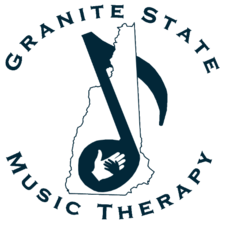A Musical Note for ADHD Awareness
Since October was National ADHD Awareness Month, I have been reflecting on the many ways music therapists can meet the needs of students with ADHD. Children with ADHD are highly intelligent and creative, they just sometimes need additional strategies for tackling hurdles that arise in the learning environment. For example, they may have a difficult time paying attention, or are fidgety in class. Here are some of the ways music therapy can address some of these challenges.
Attention
Children who have a hard time with attention can benefit from music therapy because it provides opportunities to learn in a multi-sensory environment. They are hearing the words sung and watching actions for them to model, whereas solely hearing verbal instructions might be difficult for them to attend to and retain information. The melody of a song tends to lead up to the obvious end of a phrase, and a music therapist can pause to see if a child can fill in that last word. If the child has disengaged, the sudden stop will prompt them to re-engage, with little frustration due to the predictability of the music.
Follow-Through
As previously mentioned, music provides predictability. It has a clear beginning, middle, and end. Students with ADHD may have difficulty finishing a task, but music has a clear end and defined structure within the rhythm and notes. While structured, music is also a great opportunity to introduce flexibility and exciting changes within a context that feels safe. For example, I tend to keep a routine in my music therapy sessions, but the routine is based on the interventions I use. So, if I always implement songwriting, that is the routine. But I change the topic every time. Or maybe I always have a movement activity towards the end of the session, but I rotate the songs I use. Using the same general structure each session helps the children complete a task, because they have a better understanding of when the end will be and what is coming next.
Fidgeting
Music therapy also provides opportunities for the children to move their bodies in safe and socially appropriate ways. They can sway or bounce to the music or play an instrument with modeled movements for them to mimic in real time. There are usually quite a few different ways you can use the instrument as well. For example, when I do shaker activities, I provide concrete instructions for what to do with the shaker. These may include shaking up high in the air, then shaking it low on the floor. The shaking movements are modeled and reinforced throughout the song. I kind of think of how I would take notes in school, but also doodled in the margins while I listened to the lecture as well. My hand was always moving, and I had a better time concentrating.
Impulse Control
Research has shown that especially in a group, students who participate in music therapy are found to improve their internal organization and impulse control (Rickson, 2006, pg. 41). A steady pulse for students to follow helps with self-regulation, and rhythm improves body awareness (Rickson, 2006, pg. 41). Additionally, children who are naturally impulsive may have difficulty putting off reward, so music provides an instant sense of reward when participating (Rickson, 2006, pg. 43). They are hearing their own sounds along with the sounds others are making in music, and their participation is immediately reinforced.
A Takeaway
Overall, music therapy can help with improving executive functioning. There are strategies that parents can use at home to help their children with following directions and completing a task at home as well. Instead of saying, “you need to be ready in 10 minutes,” maybe you say, “you need to be ready at the end of these 3 songs.” If a child is having difficulty completing their chores or bedtime routine tasks, it might be helpful to use a visual schedule for them, and have them physically take the picture and put it on the other side when completed. This, along with music can help them gain independence and boost their sense of self-confidence. It also makes for a less frustrating experience! It can make a daunting task a more manageable activity for the entire family, and it may even be fun!
Reference:
Rickson, D.J. (2006) Instructional and Improvisational Models of Music Therapy with Adolescents who have Attention Deficit Hyperactivity Disorder (ADHD): A Comparison of the Effects on Motor Impulsivity. Journal of Music Therapy, 43(1), 39-62.
Author: Jenni Chute, MA, MT-BC
Editor: Sonya Imperio, MT-BC
Stay up-to-date with our latest resources!
Sign up for our newsletter!
We value your privacy.






